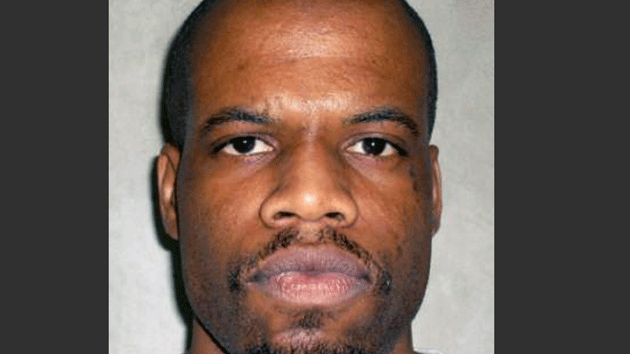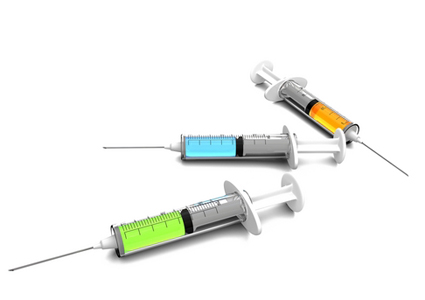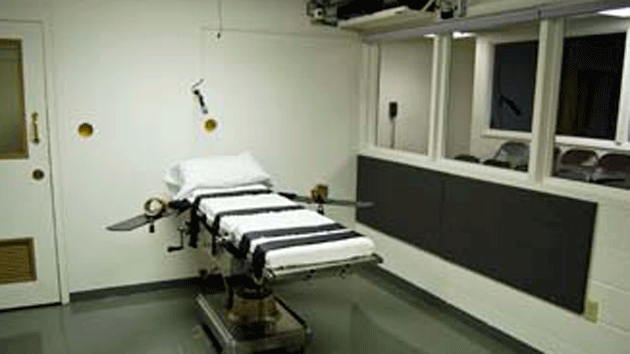
Oklahoma death row inmate Clayton Lockett, whose execution was botched in AprilOklahoma Department of Corrections
US Supreme Court Justice Antonin Scalia has famously referred to execution by lethal injection as an “enviable…quiet death.” Clayton Lockett’s death was anything but quiet.
In April, Lockett’s execution in Oklahoma was badly botched and brought new scrutiny to the problems with lethal injection. The state’s Republican governor, Mary Fallin, ordered the Oklahoma Office of Public Safety (OPS) to conduct an internal inquiry into the execution. A summary was released Thursday.
The investigation, conducted largely by a bunch of investigators working for the state highway patrol, didn’t produce much new information. The report mostly absolves the state of responsibility, even as it further documents the torture inflicted on Lockett before he died. It sheds no light on the effectiveness of the new, controversial, and experimental drugs used to kill Lockett—drugs that had been predicted to cause a torturous death.
But buried in the report are some of the rarely seen minutiae involved in the machinery of death, the small absurdities of a government-sanctioned killing—the pre-execution shower, the mental-health consultations, and suicide prevention efforts—all directed at someone about to die. And inside the report is the story of a real dead man walking who clearly didn’t view lethal injection as the enviable death Scalia thinks it is.
Before his execution, Lockett had been one of two inmates challenging Oklahoma’s law that shrouded the source of the state’s lethal injection drugs in secrecy. He’d been unable to obtain any information about where the drugs came from, whether they were legally obtained, or any other details about their purity or efficacy.
All of these issues were relevant because, thanks to a shortage of traditional execution drugs caused after pharmaceutical companies either stopped making or refused to export them, death penalty states have turned to a number of dubious means to find substitutes. Some have illegally imported them from questionable pharmacies abroad; others have turned to lightly regulated compounding pharmacies, some of which are known to have produced contaminated or irregular products. And states have been experimenting with new drugs never used in executions before. That’s what Oklahoma planned to do. Not only would it not disclose the source of the execution drugs, but it planned to use an untested drug cocktail on Lockett.
Despite all of this, the state assured Lockett’s lawyers that everything would be fine; his execution would not involve any undue suffering that might rise to the level of cruel and unusual punishment. It seems clear from the OPS report, though, that Lockett didn’t believe them.
The report confirms earlier indications that Lockett was trying to find a way to kill himself before the state could. According to the report, Lockett refused to cooperate with his executioners. At 5 a.m. on the day of his execution, correctional officers sought to take Lockett for X-rays at the health center. (Why X-rays are part of the execution protocol is not explained.)
Lockett refused to get out from under his blanket and offer up his hands to be restrained. Corrections personnel at that point noticed blood inside the cell. They sought permission to use a Taser to forcibly extract Lockett from his cell, where Lockett had blocked the door.
When they finally got him out of his cell, prison staff discovered Lockett was suffering from self-inflicted wounds to his arms, and they found razor blades from a prison-issued safety razor and a homemade rope inside his cell. The report offers other evidence that suggests Lockett was preparing for suicide: About six weeks before his execution, Lockett had been suspected of hoarding hydroxyzine, an anti-anxiety medication he’d been prescribed. After he died, an autopsy showed potentially toxic levels of the drug in his system, suggesting he also attempted an overdose before he was executed.
Lockett was treated in the emergency room for the wounds on his arms. For much of the rest of the day, he seems to have been on suicide watch to prevent him from dying prematurely. He refused every meal, and he also refused to talk to his lawyers. Toward the end of the day, a mental-health staff member met with him, and then near 5 p.m., officers put him in the shower—hoping for a clean kill, if not a quiet one, perhaps.
At 5:22 p.m., the “strap-down team” lashed Lockett to the gurney, where a doctor and paramedic would spend nearly an hour trying to stick a catheter in one of his veins. According to the new report, Lockett told the paramedic he’d spent the past three days trying to dehydrate himself, as dehydration can make it difficult for an IV to be inserted. An autopsy later showed that he failed in that regard.
Even so, the medical team was utterly unable to figure out how to get the lethal drugs into Lockett. The description of the multiple attempts to insert an IV in one of Lockett’s veins is enough to give any blood donor nightmares. A paramedic stuck a needle into Lockett’s veins in his left arm three different times, three times in his right arm, and twice in his right foot. The doctor tried his jugular vein and then Lockett’s subclavian vein in his chest. All of it failed to produce a working IV line.
Finally they cut open Lockett’s underwear, sliced open his groin and put a catheter in the femoral vein, with a needle that was at least an inch too short to do the job properly. Missing from the report is any indication of what Lockett was doing during all this activity. The blinds to the execution chamber were closed for all of it, so there were no outside witnesses. There is apparently video of his Tasing, and his refusal of meals, but none of the execution. But the description of the multiple failed IV insertions, and the report’s conclusion that the execution team lacked proper training to ensure a humane death, suggest Lockett might have wished his suicide attempts had been successful.
At 6:23, the executioners started administering the sedative midazolam, a drug never used in Oklahoma before but one tied to botched executions in other states. After seven minutes, Lockett was declared unconscious and executioners administered a paralytic and potassium bromide to stop his heart.
That’s when Lockett started to move and make sounds and officials realized something was wrong. The head of the prison system herself peeked under the sheet and, according to the new report, saw blood and fluid on Lockett’s groin. The doctor observed that Lockett had a swelling “larger than a golf ball,” according to the report. The catheter had either missed or punctured the vein and the drugs weren’t flowing into his bloodstream. The doctor tried to stick another catheter in Lockett’s other femoral vein but failed. Officials then tried to stop the execution, though they didn’t start any lifesaving efforts. Lockett eventually died at 7:06 p.m., in then one of the longest executions in American history.
Lockett was a murderer. He abducted a 19-year-old girl, shot her, and then watched as his accomplice buried her alive. He knew he was going to die for his crimes. But it’s clear he didn’t want to die like this.












